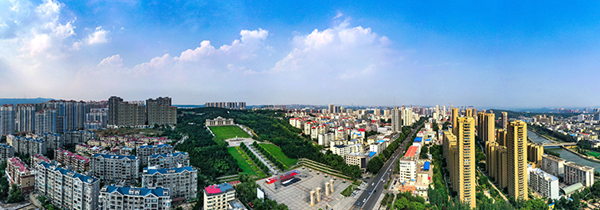Industrial growth boosts economic development in Yangquan

A panoramic view of Yangquan [Photo/Yangquan Daily]
The city of Yangquan in North China's Shanxi province has seen an expanding industrial scale, optimized industrial structure, and improved industrial foundation in recent years.
Since 2019, the average annual growth rate of industrial added value in Yangquan has reached 7.1 percent, and the number of industrial enterprises above designated size has increased from 152 to current 301.
The upgrading of traditional industries such as coal and electric power is being promoted in the city. Over the past five years, the number of local coal mines with advanced production capacity has increased from 18 to 21, and the advanced production capacity has increased from 43.4 million metric tons to 46.6 million tons, with the proportion of advanced production capacity rising from 68.7 percent to 83.81 percent.
The industrial structure in the city is continuously being optimized, with the added value of strategic emerging industries accounting for 8.3 percent of the industrial added value of enterprises above designated size.
The added value of emerging industries, new energy, and new materials industries increased by an average annual rate of 9.9 percent, 15.4 percent, 13.5 percent, respectively.
Over the past five years, the city has built a green energy consumption system. The installed capacity of new energy increased from 1.30 million kilowatts to 1.73 million kW, and the proportion of new energy in the total installed power capacity increased significantly to 25.4 percent.
During the period, the city implemented 3,121 projects and completed a total investment of 122.46 billion yuan ($17.21 billion). In 2021, industrial investment in development zones across the city surged 30.7 percent.
The city has also accelerated efforts to become a national innovative city. Over the past five years, Yangquan has added two provincial key laboratories and doubled the number of high-tech enterprises to more than 110.
Since 2019, the city has identified 56 enterprise technology centers and three intelligent manufacturing demonstration enterprises.
